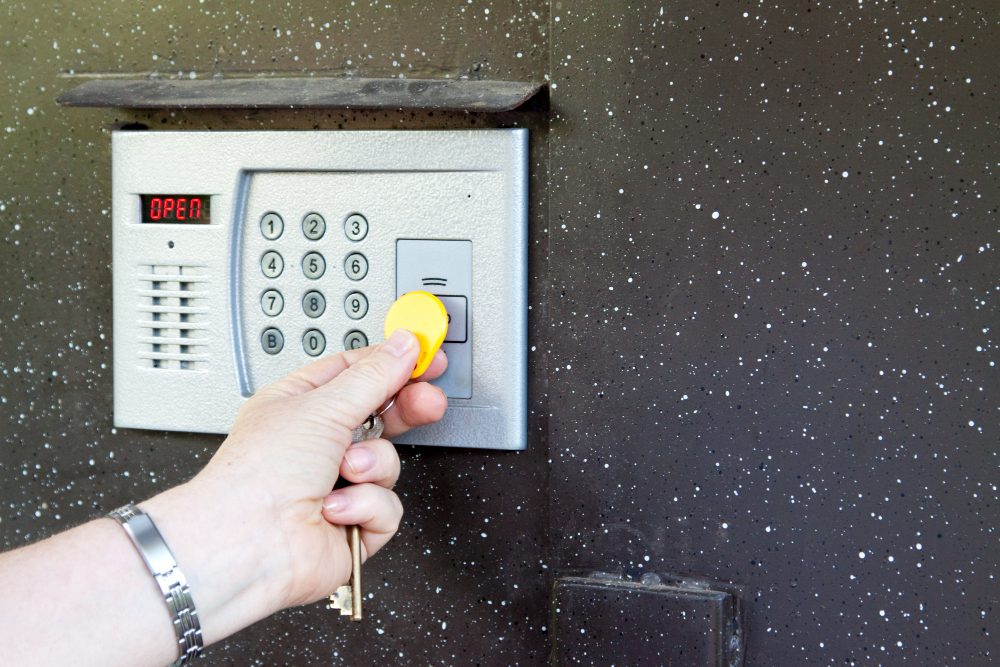Revolutionizing Control with Innovative Building Management Systems

In today’s intricate realm of property management, the challenges of overseeing day-to-day building operations and intricate systems can be daunting. Large properties often magnify inefficiencies, escalate operating expenses, and hinder the adoption of cutting-edge technology. Enter Building Management Systems (BMS), a solution designed to address these complexities and empower property owners. This article delves into the features and advantages that BMS brings to the table, shedding light on how they streamline operations and optimize performance. Definition of Building Management System Before we delve into the rich array of features and benefits that Building Management Systems (BMS) offer, it’s important to establish a clear definition. A Building Management System, or Building Automation System, is a computer application designed to oversee an array of mechanical and electronic systems within a structure. Akin to a conductor orchestrating a symphony, a BMS exercises control over crucial systems such as HVAC, lighting, energy consumption, and fire safety. A built-in analytics module allows real-time monitoring of usage patterns, enhancing your ability to make informed decisions. Unpacking BMS Features and Functionality Imagine a “mission control” for your physical building – that’s what a BMS embodies. You can access a sophisticated BMS via your computer dashboard, offering user-friendly navigation and graphics. Whether on a dedicated device or your computer, the interface provides enhanced security measures such as password protection. It’s flexible too, enabling configuration of daily or seasonal schedules for all connected utilities. The BMS serves as the nexus linking various building systems, providing a centralized interface for managing disparate elements. Its core functionalities include: 1. Illuminating Insights: Effortlessly control and monitor lighting, while tracking energy consumption to facilitate informed decision-making. Receive alerts prompting timely bulb replacements, and even schedule outdoor lights to illuminate automatically at night. 2. Enhanced Security: Seamlessly integrate with alarm systems and security cameras, enabling real-time tracking and management to safeguard your property. 3. Fire Safety and Sprinkler System: While primarily for monitoring, the BMS can collaborate with security systems to handle fire alarm panels, ventilation systems, and elevators during emergencies. 4. Access Control: Oversee access points to facilities like parking garages and pools, providing a robust amenity management solution. 5. Climate Optimization: Take charge of heating, air conditioning, and air handling systems to ensure optimal comfort and efficiency. The Benefits of Embracing BMS A BMS is more than just an interface – it’s a gateway to multifaceted advantages: 1. Optimal Comfort: Tailor lighting, air quality, and climate control schedules to ensure comfort for all occupants, enhancing their experience. 2. Efficient Energy Management: By scheduling lighting and HVAC systems, you minimize utility expenses and prolong system life, all while promoting energy efficiency. 3. Seamless Integration: Integrating the BMS with other systems bolsters data flow, facilitating actionable insights for better decision-making. 4. User-Friendly Advantage: Operating a unified BMS system proves simpler, quicker, and more efficient, reducing the risk of human errors. 5. Sustainability Champion: Effective energy management not only reduces operational costs but also contributes to a reduced carbon footprint, enhancing your property’s environmental impact. Selecting the Right BMS Choosing the ideal Building Management System requires careful consideration: 1. Ease of Implementation: Opt for systems with straightforward implementation to avoid complex onboarding and operational hassles. 2. Future-Ready Approach: Ensure the BMS aligns with your long-term goals and accommodates future scalability, preventing frequent system changes. In a landscape where efficiency reigns supreme, Building Management Systems emerge as essential tools for streamlined operations and enhanced sustainability. Their role in centralizing control, optimizing resource utilization, and providing real-time insights makes them invaluable assets for modern property management. As automation technology continues to evolve, the BMS remains a powerful driver in shaping a smarter, more efficient future.
The Ultimate Keyless Entry System Guide: Everything You Need To Know

With the advent of advanced cloud technology, it’s no surprise that keyless entry systems are rapidly gaining popularity across various industries. Embracing keyless solutions allows businesses to streamline daily operations while maintaining a high level of security within their premises. As cutting-edge cloud technology continues to be embraced by industry leaders, accessing secured areas and entryways using smartphones has become a reality for end-users. Beyond convenience, these advanced systems empower business owners and managers with greater control, enabling them to tailor access permissions to align with specific responsibilities. Understanding Keyless Entry Systems: While the term “keyless entry systems” may seem self-explanatory, a deeper exploration is essential in today’s rapidly evolving digital landscape. While many have encountered keyless systems in vehicles and private residences, our focus here is on commercial keyless entry systems designed to secure business premises such as schools, warehouses, corporate offices, and other commercial establishments. How Do Keyless Entry Systems Operate? Keyless door locks function much like traditional lock-and-key mechanisms, facilitating the opening and closing of various entry points within a facility. The fundamental distinction lies in the absence of a physical key. Depending on the chosen model, authorized personnel can input a code, utilize a keycard or key fob, or engage biometric methods such as thumbprints or facial recognition to gain entry. The lock generally remains open for a brief duration after activation and re-engages automatically upon door closure. Benefits of Adopting Keyless Entry Systems: Enhanced Security: Conventional keys are prone to loss, duplication, and are ill-suited for modern security needs. Keyless entry systems require unique credentials for authorized users, reducing the risk of unauthorized key copying and access. Ease of Management: Traditional lock-and-key procedures necessitate reconfiguration and key replacement whenever an employee departs, incurring significant costs. For businesses with high turnover rates, this poses financial and security challenges. Electronic keyless systems offer effortless reconfiguration, allowing addition or revocation of credentials without the need for physical keycards. Comprehensive Data Insights: Unlike traditional keys, keyless entry systems offer real-time tracking of entry actions, ensuring a detailed record of access. Encrypted communication verifies credentials, offering heightened security and precise entry tracking. Remote Accessibility: Operating on cloud-based architecture, keyless entry systems prove invaluable for businesses with multiple locations. Administrators can remotely adjust schedules, lock and unlock doors, and manage access privileges effortlessly. Varieties of Keyless Electronic Door Locks: Keyless/Wireless Smart Locks: These locks connect via Wi-Fi, offering remote control of security features through a mobile app, regardless of geographical location. Many smart locks incorporate Bluetooth technology, enabling automatic door unlocking within proximity. Keypad/Combination Locks: Requiring a personal identification number (PIN), these locks are easy to install and maintain. Codes can be assigned to multiple users, and PINs can be changed periodically for added security. Biometric Locks: Biometric locks utilize unique identifiers such as fingerprints or ocular scans for access. This highly secure method reduces the risk of unauthorized entry. Selecting a Keyless Entry System for Your Premises: Choosing the ideal keyless entry system hinges on aligning features with your business requirements. Keypad locks are suitable for those averse to traditional keys, while considerations like the number of codes and remote access capabilities should also influence your decision. Addressing Common Challenges: While Keyless Entry Systems enhance security, challenges exist. Tailgating and vulnerabilities can compromise effectiveness. Smart systems, leveraging mobile credentials and video recognition, mitigate risks. This comprehensive guide aims to provide an illuminating exploration of Keyless Entry Systems. By assimilating these insights, you’ll navigate the landscape of access control with heightened comprehension and awareness, empowering your organization with advanced security solutions. With the appearance of a few advances in cloud technology, it’s not unexpected that keyless entry systems are filling in ubiquity across countless enterprises. Going keyless offers organizations the chance to work on standard routines at the workplace while keeping structures and offices properly secured. As cutting-edge cloud technology is quickly embraced by top industry players, it is presently workable for end-users to effortlessly get to safeguarded workplaces and entryways with their cell phones. The top frameworks additionally award entrepreneurs and directors more command over their offices, as they can undoubtedly modify the framework to give staff the level of access uniform with their duties. Introducing Millennium Ultra: A Cloud-Based Keyless Entry Solution Millennium Ultra presents a scalable and customizable cloud-based keyless entry system, seamlessly integrating hardware and software. With an intuitive mobile app, users experience personalized access and a secure environment. In essence, keyless entry systems have ushered in a new era of access management, revolutionizing security protocols and operational efficiency. By embracing this technology, businesses can unlock a realm of possibilities, ensuring a safe, streamlined, and intelligent approach to access control.
Why Is Millennium Ultra Considered One Of The Best Security Systems In The USA?

Millennium Ultra Software has been hailed as a comprehensive and robust door security system in the USA by many experts and end-users.



